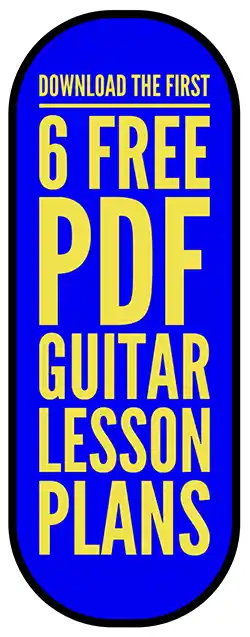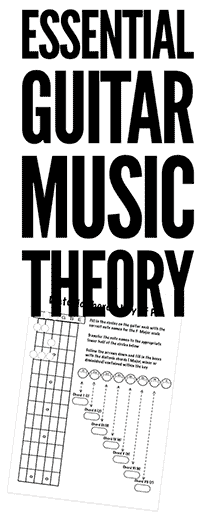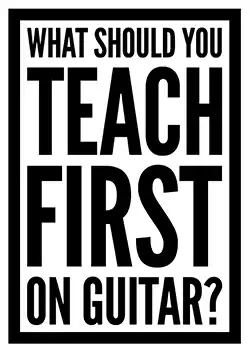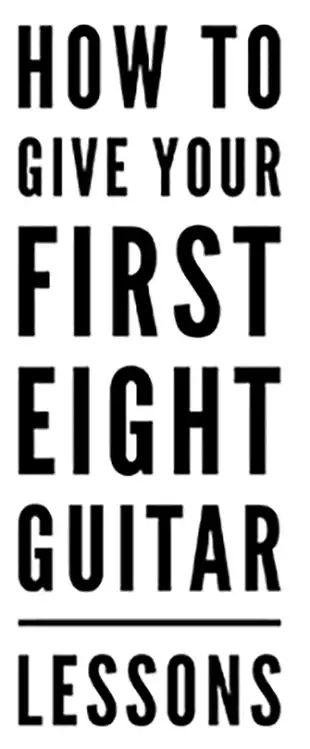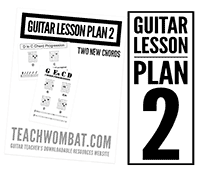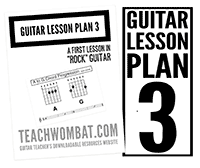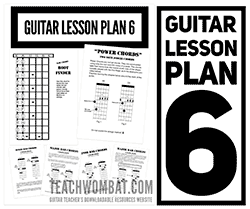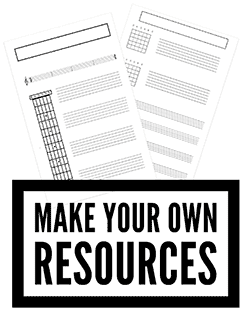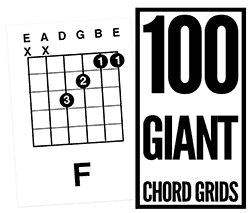
How To Teach Jazz Guitar
Teaching Jazz Guitar:The Method
Step 1: Make Sure That They are Ready
Step 2: Cover The Five Basic Jazz Guitar Chord Types
Step 3: Work On Developing A Repertoire Of Jazz Standards
The vast majority of guitar teachers function perfectly well "without having to resort to jazz" (as a guitar teaching friend of mine so charmingly put it) It is perfectly possible to teach advanced guitar to a professional level and never really have to engage much with the genre and with the majority of our customers being beginner or intermediate level players leaning towards Rock, Blues, Metal, Country and Funk"
As guitar teachers I hope we're beyond the stage where we compare genres in order to determine which one is "better" than the others but one thing is clear........
"If you understand the guitar music theory behind the harmonic (chordal) and melodic (scalar) functions involved in Jazz Guitar they you can understand the harmonic and melodic content of all of the other styles""
For that reason alone if you are a guitar teacher a knowledge of the chordal functions and devices associated with Jazz harmony can do you (and your business!) nothing but good
The best way to start a study of Jazz Guitar

Above you can see Five of the Fifteen Basic Jazz Guitar Chord Handouts from the dowloads
Each of the five chord types has three different shapes (with root notes on the E, A and D strings) and there is a separate handout for each chord shape detailing where it can be played on the neck of the guitar
Get Three Free Handouts
Each handout provides the fingering for the chord shape alongside the formulae of each shape alongside a graphic representation of the guitar neck with all of the options for the root note of the chord laid out
"A Gateway To Jazz Guitar" Handouts and Worksheets

How do you teach someone to play Jazz Guitar from a standing start?
Jazz harmony typically uses more complex (four or more note) chords than other popular styles (which are typically based on triads-three note chords). It cannot be stated strongly enough that in order to "understand" jazz (as opposed to just learning some chord shapes that produce a "jazzy" noise) students should understand the diatonic system of three note chord that can be constructed from any Major Scale
Helping our students to understand how Jazz chords work
The illustration above shows just one of the worksheets that asks a student to first fill in the notes of a specified Major Scale. They are then asked to build a triad on each note of the scale before being required to add a fourth note from the scale to produce the relevant 7th chord. Developing an understanding of this process is absolutely crucial to understanding how Jazz works as opposed to thinking (as many seem to) that its "just a bunch of random complicated chords"

I need to stress right from the off that this site is not setting out to be anything like a comprehensive guide to Jazz Guitar. There already are some wonderful (and some not so great to be honest) websites up there put together by real experts who have dedicated huge amounts of time, effort and expertise into what is an incredibly diverse subject.
Follow the link below to go to our page dealing with basic guitar music theory and the resources required to teach it effectively
How triads work in all Major Keys
Or you could just stay on this page to look at a video I have up there on Youtube that explains how to work out and construct the triads (three note chords) in any key (basing a chord on each letter name of the scale and using only the notes of the scale)
Remember! our students have no chance of understanding how four note (jazz?) chords work and relate to each other if they do not first develop a knowledge and understanding of the three note chords that they are based on
This Video Even Makes Sense With The Sound Muted!
Jazz Guitar is all about the five basic chord types
There are just five basic Jazz guitar chords (Maj7, m7, Dominant7, m7b5 and diminished7) Other chords found in Jazz tend to be extensions to, or alterations of the basic five chords and when someone can move between them in time to music then they are functioning Jazz guitar players and are ready to move on and follow their own interests within what is one of the most diverse genres in existence
Learn Five Jazz Guitar Chord Shapes and "Autumn Leaves"
"Learn five chord shapes and Autumn Leaves"......When a student asks me "How do I learn to play Jazz Guitar?" thats what I reply. Its a very easy short and concise way of "decluttering" the whole subject. What I don't tell them (right away) is that they will be learning each of the five chord shapes in three places on the neck (with root notes based on the E,A and D strings) and that in the process they will develop an advanced level understanding of how guitars work

When a guitar player can move between the five important chords then they are ready to develop as "real" Jazz guitarists do by learning a bunch of "Jazz Standards" that just about all Jazz musicians know and use in order to play and with one other without the need for rehearsals. Think of them as a bunch of Jazz "Johnny B Goods" or "Smoke On The Water" type tunes that everyone who operates in the genre is presumed to know
Jazz guitar harmony is based on five chords and extensions and alterations to those chords. When a player is able to understand and work out answers to the questions "extended from what?" and "altered from what?" then they have developed a high level of functioning harmonic knowledge that will feed into every other style that they operate in.
You dont have to be a Jazz Guitar player (that comes from playing and practicing Jazz) to benefit from understanding what is commonly referred to as "Jazz" harmony. Its not really "Jazz Harmony" its just advanced harmony and there are "funny" chords (derived from or heavily featured in the genre) in all kinds of music and understanding them (rather than just looking up where to put your fingers?) can do your musicianship (and that of your students) nothing but good
Helping our students to understand how Jazz chords work
Teaching Jazz Standards like "Autumn Leaves" or "Fly me To The Moon" on Guitar is a great way to introduce intermediate players to developing a capability on Jazz Guitar
Download absolutely everything you see and hear on this website (thats over 450 PDFs and 35+ Backing Tracks) for only $25.00
Rather than divide the materials into a series of teaching packs and sell them separately (as I have been advised to do on numerous occasions by people who know much more about this online marketing malarkey than I do) I would much rather just bundle all of the guitar teaching aids together in a single download and have folks feel like they got a bargain rather than decide between options and run the risk of choosing the wrong one
$25.00
Alongside the resources aimed at teaching beginners and children there is also a whole load of materials that can be used when teaching intermediate and more advanced guitar players or designing your own guitar teaching resources
There are a whole load of resources designed for teaching music theory to guitar players and even stuff aimed at helping a teacher to understand how songwriting works on guitar
Add the material on teaching ukulele alongside the bass guitar teaching resources in addition to stuff geared towards teaching jazz guitar basics and you can see why I feel justified in claiming that the teachwombat download offers rediculously good value for money
Only the most advanced and versatile guitar teachers will use all of the materials but I think it is fair to claim that anyone who teaches guitar will find that the download makes their teaching better and the process easier
$25.00
Developing a repertoire of Jazz Standards for Guitar
Below is a version of the Frank Sinatra classic "Fly Me To The Moon" that I stuck up on Youtube a while back which features TAB and (much more importantly from a teacher's point of view) an analysis of what is going on in the arrangement
Although it uses "jazz" chords the written analysis in the video looks at how a guitar player/teacher might adapt the chords (often not playing the "full" chord or even implying that a chord is there when it is not played using walking bass lines)
Diving deeper into Jazz Guitar
If you want to go deeper into the subject of jazz guitar you could do worse than check out some sites that I have often used to increase my own knowledge and capability. jazzguitar.be has been a great help to me and has a very clear and no nonsense approach to the subject. jazzguitarlessons.net is another useful one with a load of informative video content I should stress that I have no connection with any of the webssites, I just like what they do and their stuff works for me
When it comes to Jazz Guitar all I bring to the table is a way in which guitar teachers can give their students clear guidance on how to make an effective entry into the genre. I am not a great Jazz guitarist. I can get around the guitar in a Jazz style and can easily convince the average audience that I am a competent Jazz player but the truth is if you stuck me in front of a discerning and knowledgable Jazz audience for a recital you would find the bar next door to the venue filling up with grumpy beard strokers in record time.
I have though (and am very proud of it) introduced the basics of Jazz to folks who went on to be very good (much, much better than me) Jazz musicians and as a teacher I take great pride in that. We should give up as teachers if none of our students ever get to better than us. Learning to be a "bad" jazz guitarist was one of the best things that ever happened to my guitar playing (and teaching!) and learning a new Jazz Standard to add to my repertoire is one of my favourite things to do on a guitar
Triads To 7th Chords
The basics of Jazz harmony involve four note chords. The four note chords are based on existing three note chords (triads). When a guitar player understands how Major, minor and diminished chords are constructed and combined into keys then they have a theoretical understanding that can be further developed to include Jazz harmony.
Alongside this theoretical knowledge they should be technically capable of playing Major and minor bar chords comfortably and in time around the neck of the instrument. If they are not there yet then it is best to pay attention to these areas before venturing into Jazz Guitar
Follow the link below to go to our page dealing with basic guitar music theory and the resources required to teach it effectively
The Deluxe Package:
Download everything that you can see and hear on this website for just $25.00
HOW TO DOWNLOAD
the teachwombat materials
Buy your teachwombat.com toolkits in complete safety via any major credit card (through paypal) or directly through your paypal account if you have one. If you choose to use a credit card, rest assured that we never see your credit card details as paypal do all of that for us.
When Paypal receive your payment you will be immediately invited to click a
"RETURN TO SELLER"button.
You will be taken to a page from where you can download the products that you have paid for NOW!
In the (rare) event that something should go wrong with the order/download process just email me at robh@teachwombat.com
I will check the order and send you the links that will get you to your stuff.
Cheers! Rob!
You can pay with a credit card (via PayPal) or with a PayPal account if you have one.
They take care of the payment side and you can be sure that we never get to see your credit card details


